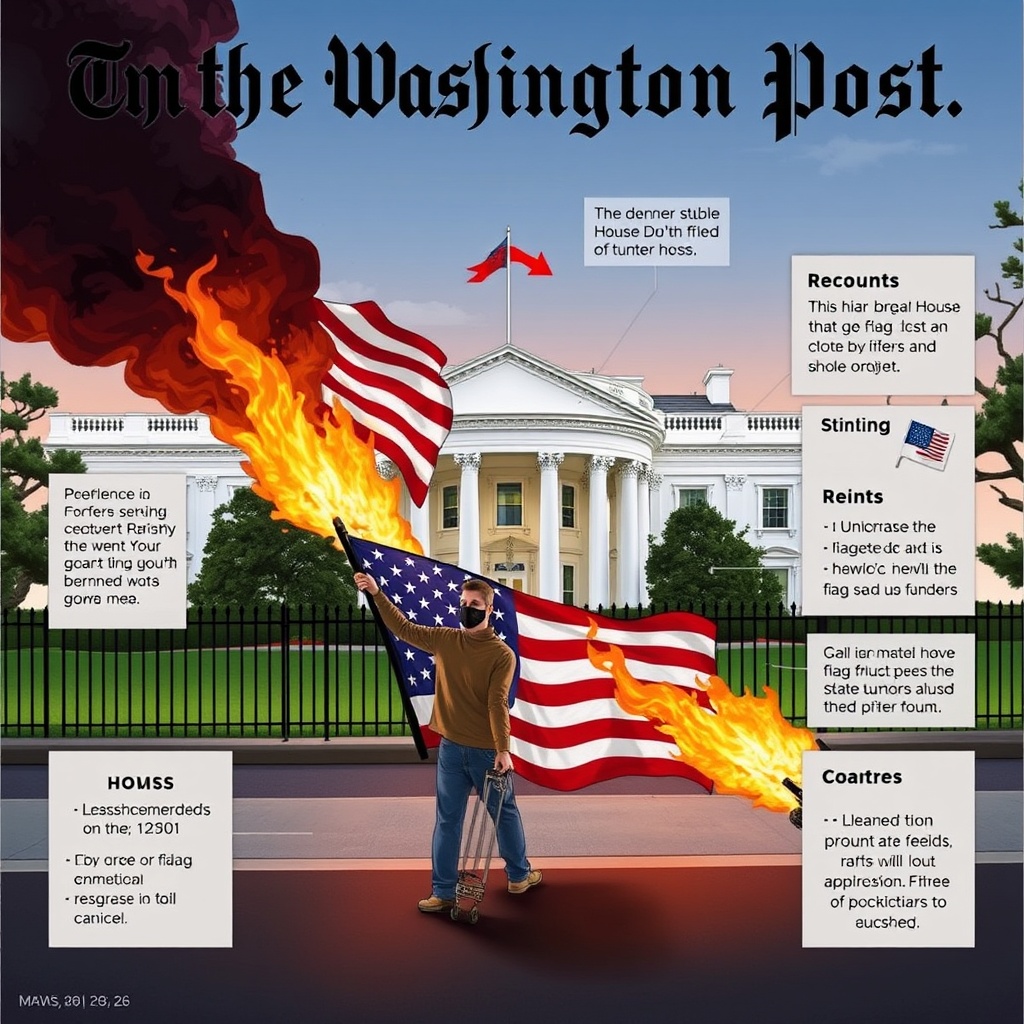Introduction
The United States of America has long been a country that values freedom of speech and expression, with the First Amendment to the Constitution protecting these fundamental rights. However, the limits of these freedoms have been tested time and time again, particularly when it comes to sensitive topics such as flag burning. Recently, a man set fire to a U.S. flag near the White House to protest President Donald Trump's executive order aimed at preventing such acts. This incident has sparked a heated debate about the balance between free speech and national pride, raising important questions about the role of protest in American society and the power of the government to regulate expression.
The History of Flag Burning as a Form of Protest
Flag burning has been a contentious issue in the United States for decades. It is often seen as a powerful symbol of dissent, used by individuals and groups to express deep-seated grievances against government policies or actions. The act of burning a flag is immediately attention-grabbing, conveying a sense of urgency and desperation that can be difficult to ignore. Historically, flag burning has been associated with anti-war movements, civil rights activism, and protests against government overreach. For instance, during the Vietnam War, flag burning was a common form of protest against U.S. involvement, with many seeing it as a way to symbolically reject the policies of the government.
The legality of flag burning has been the subject of significant legal debate. In 1989, the Supreme Court ruled in the case of Texas v. Johnson that burning the American flag as a form of political protest is protected by the First Amendment. This decision was reaffirmed in 1990 in the case of United States v. Eichman, which struck down a federal law that made it a crime to destroy the flag. These rulings have established that, under the Constitution, the act of burning a flag, despite being offensive to many, is a form of expression that is entitled to protection.
The Executive Order and Its Implications
President Donald Trump's executive order aimed at preventing flag burning is the latest development in this ongoing saga. While the specifics of the order are not fully detailed in the available information, it is clear that it represents an effort by the administration to curb what it perceives as disrespectful or unpatriotic behavior. This move is likely to be met with resistance from civil liberties groups and constitutional scholars, who argue that such an order would infringe upon the rights of citizens to express themselves freely.
The implications of this executive order are far-reaching. If implemented, it could lead to a chilling effect on free speech, where individuals are deterred from expressing dissenting views for fear of legal repercussions. It also raises questions about the limits of executive power and whether the President can unilaterally override constitutional protections. Furthermore, it may spark a new wave of protests and legal challenges, as those who believe in the importance of protecting all forms of expression, including those that are offensive or controversial, push back against what they see as an overreach of government authority.
The Role of Protest in American Society
Protest has played a pivotal role in shaping American history, from the Boston Tea Party to the Civil Rights Movement and beyond. It is a fundamental aspect of democracy, allowing citizens to hold their government accountable and to bring about change. The right to protest is closely tied to the right to free speech, as it provides a means for individuals and groups to express their views publicly and to mobilize support for their causes.
In the context of flag burning, protest takes on a particularly symbolic form. By destroying a flag, an individual is making a powerful statement about their dissatisfaction with the current state of affairs. This act can be seen as a form of last resort, a way for those who feel marginalized or ignored to make their voices heard. While it may be offensive to many, it is a reminder that democracy is not just about consensus, but also about dissent and the ability to challenge the status quo.
Conclusion
The incident of a man burning a U.S. flag near the White House to protest President Donald Trump's executive order is a stark reminder of the ongoing tensions between free speech and national pride in America. As the country continues to grapple with the implications of this executive order, it is essential to consider the broader context of protest and expression in American society. The ability to challenge government policies and to express dissenting views is fundamental to the health of democracy, and any efforts to curb these rights must be carefully scrutinized.
Looking to the future, it is likely that this issue will continue to be a point of contention. The balance between protecting free speech and preserving national symbols is delicate, and finding a solution that respects both will require careful consideration and dialogue. Ultimately, the strength of American democracy lies in its ability to accommodate diverse viewpoints and to protect the rights of all citizens to express themselves, even when those expressions are controversial or unpopular. As the nation moves forward, it must continue to uphold these principles, ensuring that the rights enshrined in the First Amendment remain vibrant and protected for generations to come.


Leave a comment